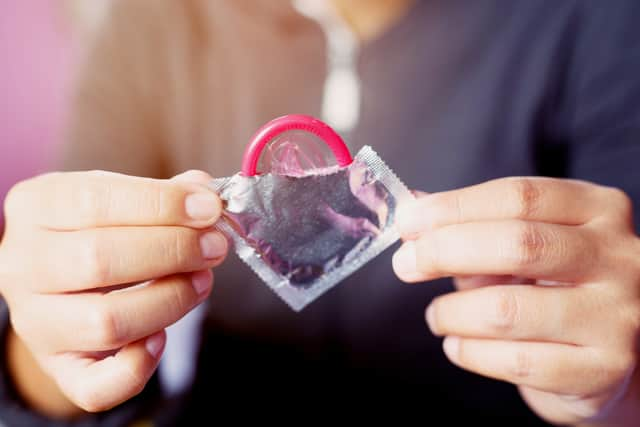Donovanosis symptoms: signs of new flesh eating STI caused by klebsiella granulomatis, and is there treatment?
This article contains affiliate links. We may earn a small commission on items purchased through this article, but that does not affect our editorial judgement.
and live on Freeview channel 276
A rare “flesh eating” sexually transmitted infection (STI) is reportedly on the rise in the UK according to data from Public Health England.
Recently Dr Karan Raj went viral on TikTok after posting a video explaining the virus.
This is everything you need to know.
Advertisement
Hide AdAdvertisement
Hide AdWhat is Donovanosis?
Donovanosis, also known as granuloma inguinale, is a type of sexually transmissible disease that infects the skin around the genitals, groin, anal or mouth area.
The reason that this STI is often described as “flesh eating” is because it causes genital ulcers, which are lesions, or sores, which detroy skin and tissue.
Donovanosis is caused by a bacteria called Klebsiella granulomatis, and the ulcers are initially painless. Without treatment, these sores will increase in size and can evolve into a red lump that progressively destroys normal skin.
Other bacterias can also infect these sores, which can cause them to become painful.
Advertisement
Hide AdAdvertisement
Hide Ad

The Centers for Disease Control and Prevention says: “Clinically, the disease is characterized as painless, slowly progressive ulcerative lesions on the genitals or perineum without regional lymphadenopathy; subcutaneous granulomas (pseudobuboes) also might occur.
“The lesions are highly vascular (i.e., beefy red appearance) and can bleed. Extragenital infection can occur with infection extension to the pelvis, or it can disseminate to intra-abdominal organs, bones, or the mouth.”
Because the sores are so typical, it can usually be diagnosed from sight alone, but because it is such an uncommon STI, a biopsy is often taken and looked at under a microscope.
A diagnosis is confirmed from the appearance of typical “Donovan Bodies”.
Advertisement
Hide AdAdvertisement
Hide AdHow is it treated?
The good news is that it can be treated with a course of antibiotics, with the ulcers beginning to heal within days.
The length of the course of antibiotics will depend on the length of time since the infection, and what stage the infection is at. Painkillers can also be taken if the ulcers are painful.
Any partners of the person diagnosed with the infection will also require treatment as well.
Treatment is important because if left untreated, donovanosis could cause permanent genital inflammation, scarring, damage or tissue discolouring.
Advertisement
Hide AdAdvertisement
Hide AdHealthline also adds: “It’s also possible for the infection to spread to your pelvis, bones, and internal organs.
“This STI may even cause damage to the anus, urethra, and bowels. Cancers may occur in untreated genital ulcers.”
How is it spread?
Like most other STIs, donovanosis is primarily transmitted from person to person via vaginal or anal intercourse. It can also be passed on through oral intercourse as well.
In some rare cases, this STI has also been transmitted through nonsexual, skin-to-skin contact.
Advertisement
Hide AdAdvertisement
Hide AdIt’s possible for a mother to pass it to their newborn during childbirth if the mother has an infection.


You can reduce the risk of contracting the infection by using barrier methods during sex, like condoms. You should also abstain from sex if a person has visible ulcers.
While oral contraceptives like birth control pills aim to prevent pregnancy, they don’t prevent STIs.
The incubation period of the infection can vary widely, from one to four weeks to as long as a year, but generally the signs and symptoms will appear within a few weeks.
Advertisement
Hide AdAdvertisement
Hide AdWho is most at risk?
Anyone who is sexually active is at risk of contracting the STI, but specifically people between the ages of 20 to 40 are in the highest risk category.
It is also most prominent in the following regions:
- Brazil
- The Caribbean
- Southeast India
- Southern Africa
- Papua New Guinea
A message from the editor:Thank you for reading. NationalWorld is a new national news brand, produced by a team of journalists, editors, video producers and designers who live and work across the UK. Find out more about who’s who in the team, and our editorial values. We want to start a community among our readers, so please follow us on Facebook, Twitter and Instagram, and keep the conversation going. You can also sign up to our newsletters and get a curated selection of our best reads to your inbox every day.
Comment Guidelines
National World encourages reader discussion on our stories. User feedback, insights and back-and-forth exchanges add a rich layer of context to reporting. Please review our Community Guidelines before commenting.
